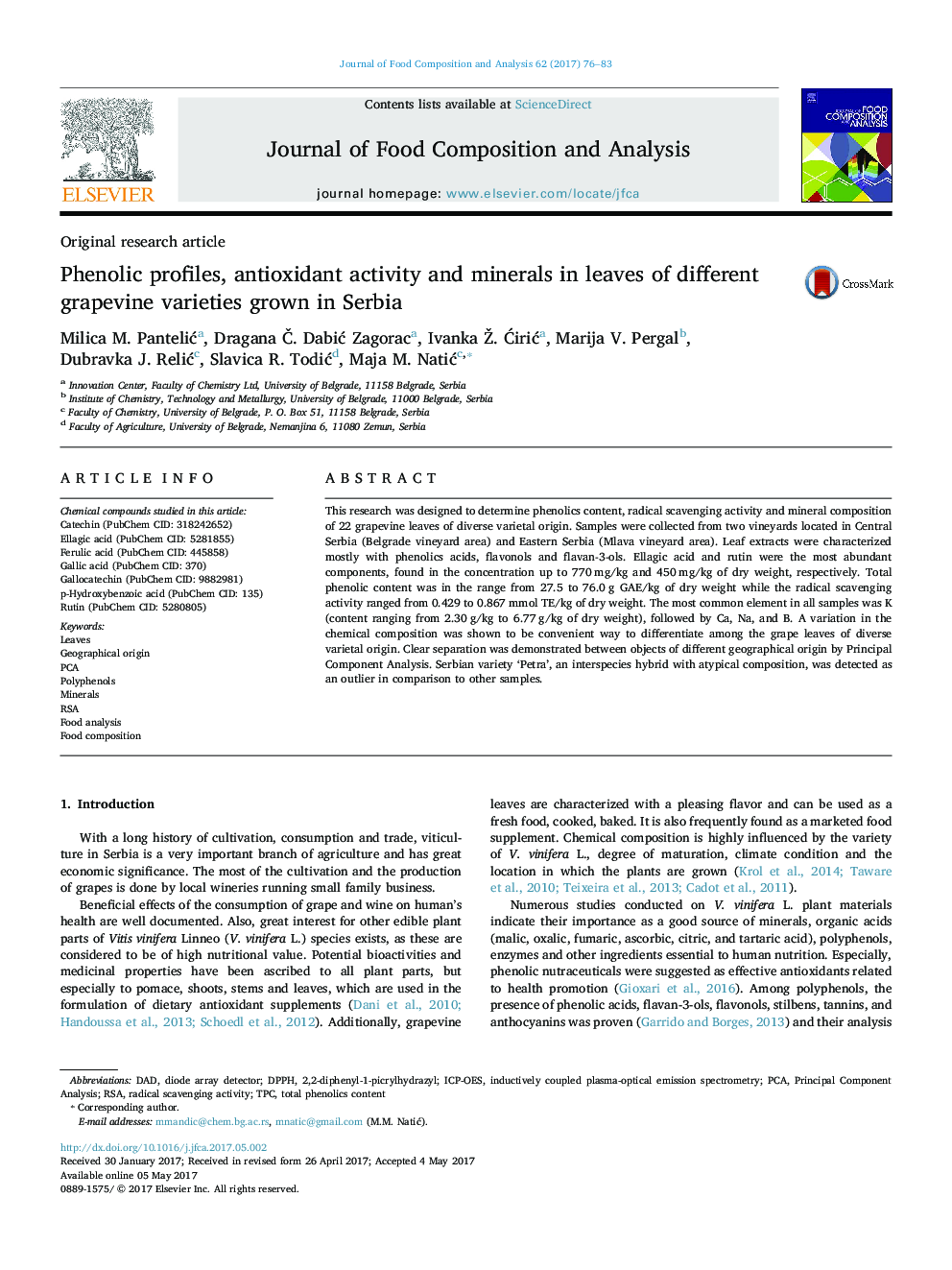| Article ID | Journal | Published Year | Pages | File Type |
|---|---|---|---|---|
| 5136862 | Journal of Food Composition and Analysis | 2017 | 8 Pages |
â¢Phenolic profile and mineral composition of 22 grapevine leaf samples was determined.â¢Leaf samples were collected in two different regions in Serbia.â¢International and Serbian autochthonous white and red varieties were studied.â¢Discrimination of leaves based on geographical origin was achieved.â¢An interspecies hybrid 'Petra' was shown to be atypical sample.
This research was designed to determine phenolics content, radical scavenging activity and mineral composition of 22 grapevine leaves of diverse varietal origin. Samples were collected from two vineyards located in Central Serbia (Belgrade vineyard area) and Eastern Serbia (Mlava vineyard area). Leaf extracts were characterized mostly with phenolics acids, flavonols and flavan-3-ols. Ellagic acid and rutin were the most abundant components, found in the concentration up to 770Â mg/kg and 450Â mg/kg of dry weight, respectively. Total phenolic content was in the range from 27.5 to 76.0Â g GAE/kg of dry weight while the radical scavenging activity ranged from 0.429 to 0.867Â mmol TE/kg of dry weight. The most common element in all samples was K (content ranging from 2.30Â g/kg to 6.77Â g/kg of dry weight), followed by Ca, Na, and B. A variation in the chemical composition was shown to be convenient way to differentiate among the grape leaves of diverse varietal origin. Clear separation was demonstrated between objects of different geographical origin by Principal Component Analysis. Serbian variety 'Petra', an interspecies hybrid with atypical composition, was detected as an outlier in comparison to other samples.
Graphical abstractDownload high-res image (151KB)Download full-size image
